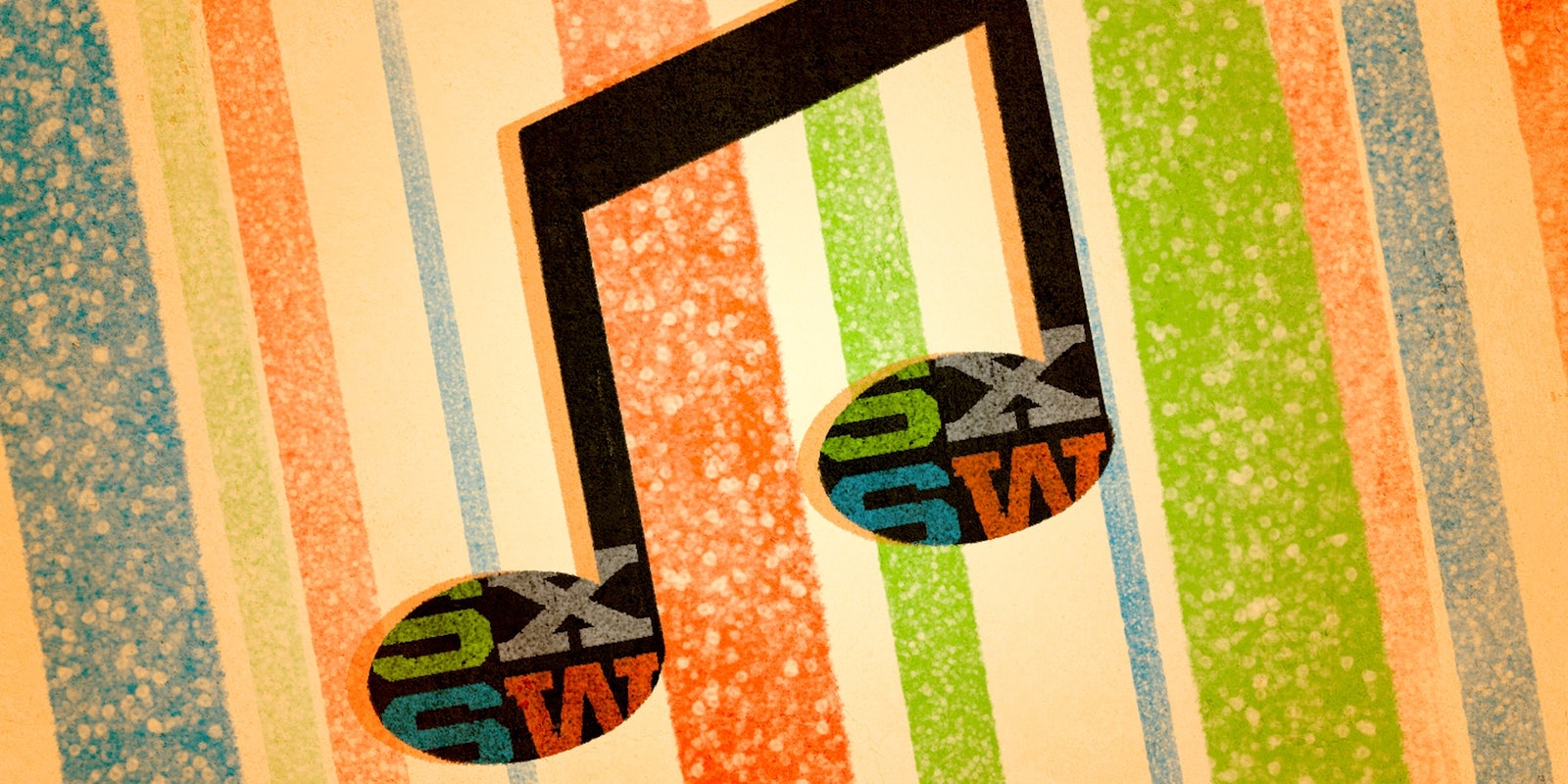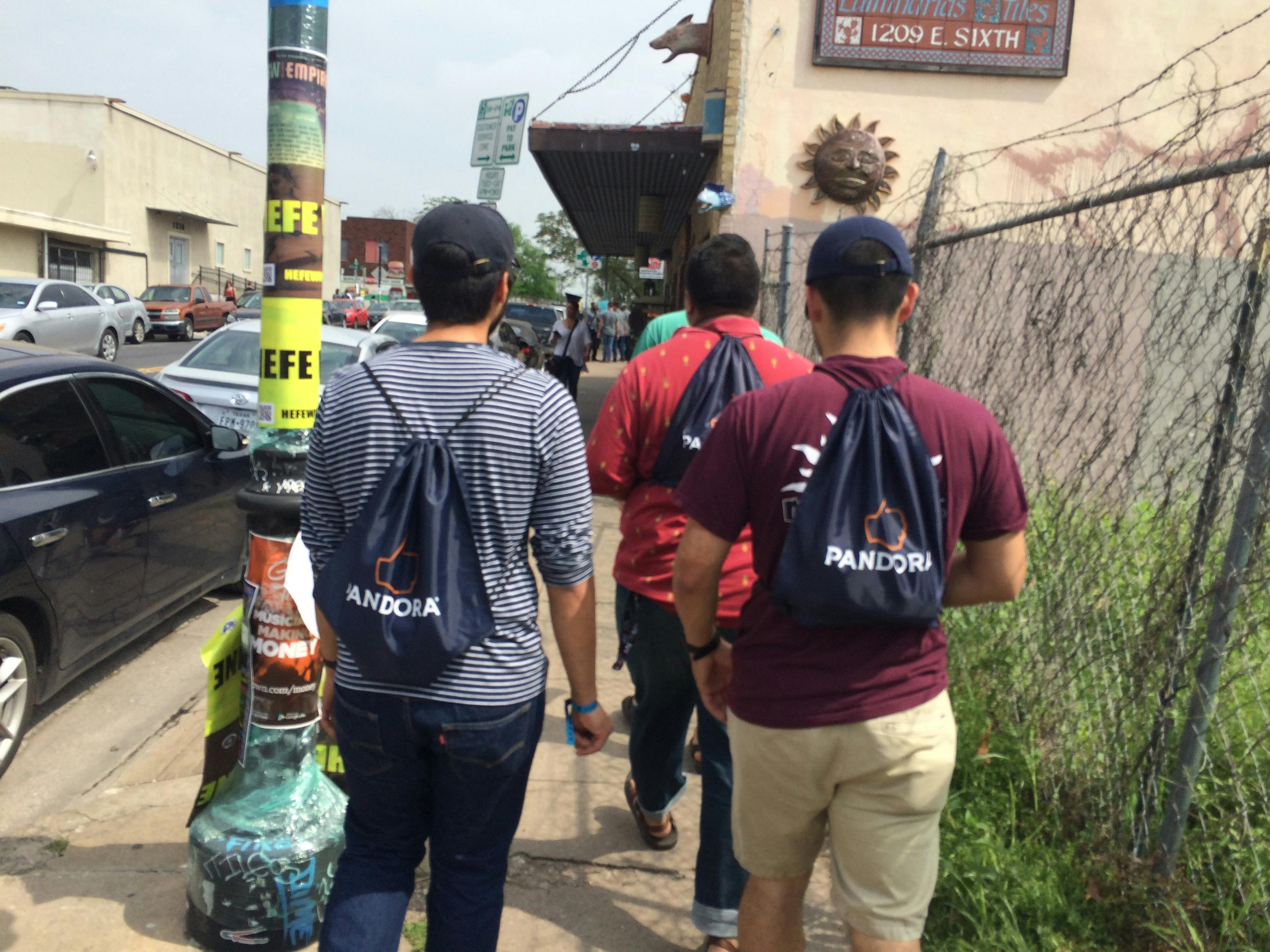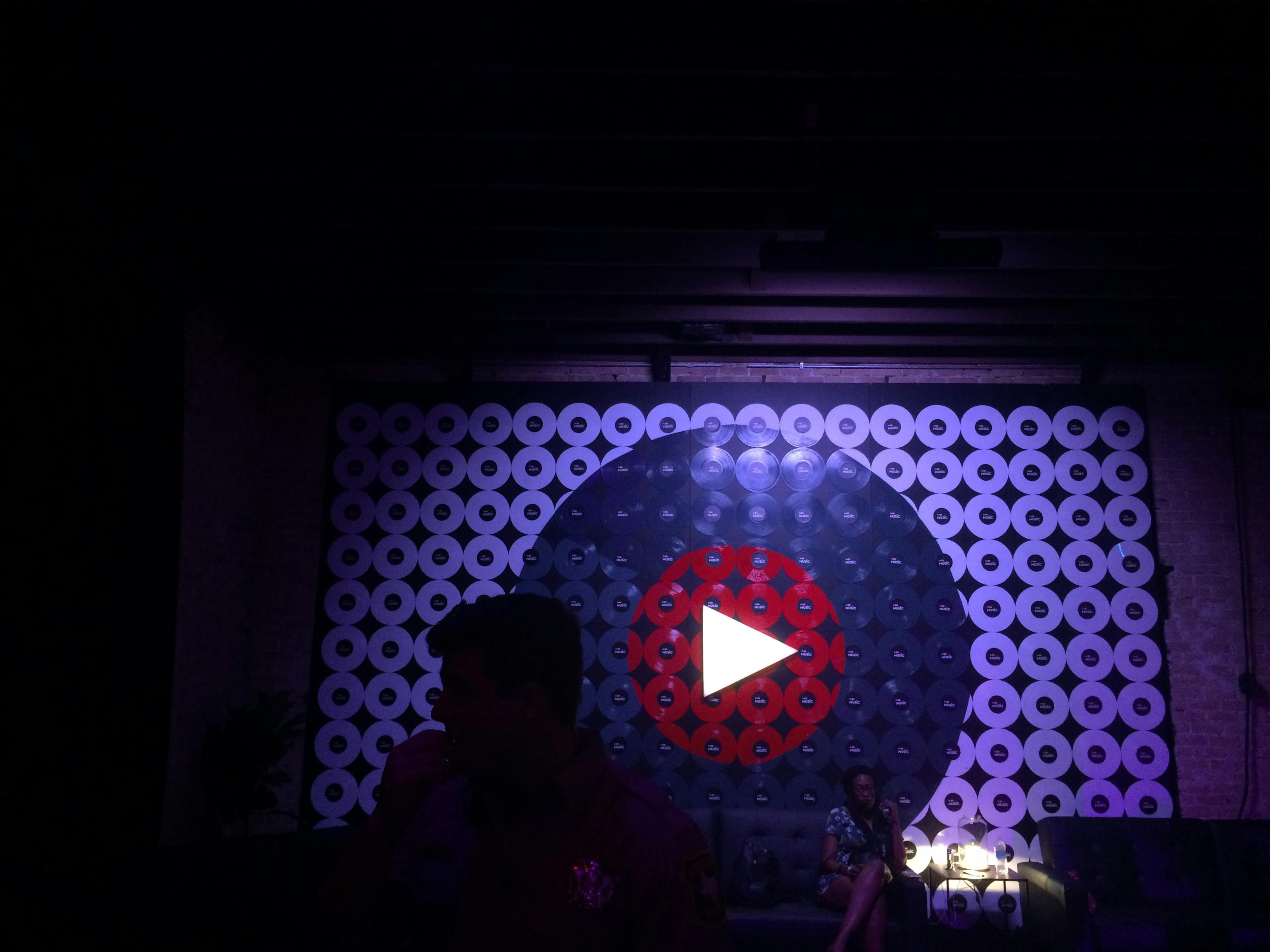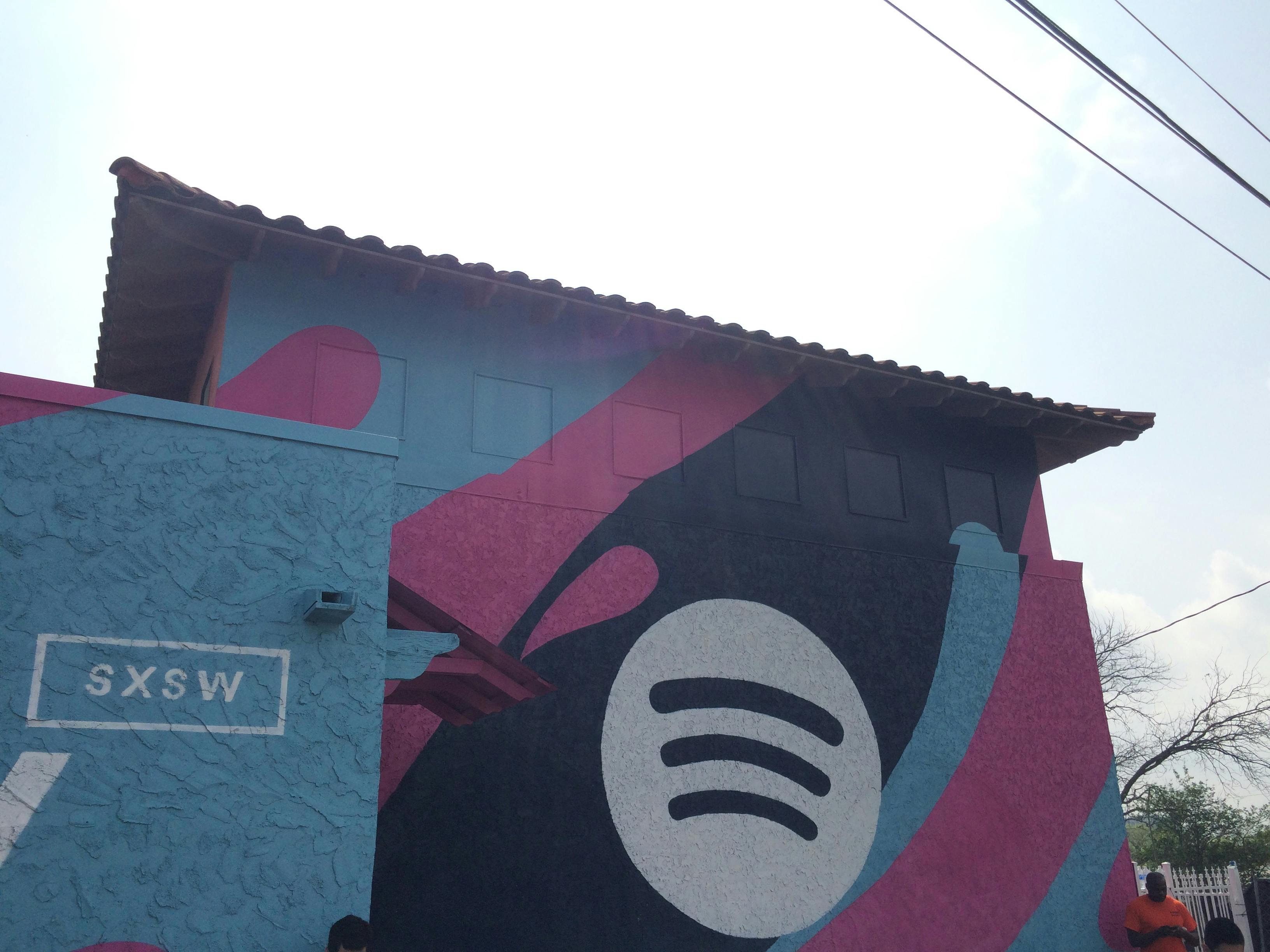Streaming services were once decreed a death knell for the music business. But those very companies converged upon South by Southwest (SXSW) this month to try to mold the industry in their image—and, in the process, save it.
As these platforms, Web services, and apps jostled for footing in Austin, Texas, they also wrestled with an existential crisis: Forget royalty payouts or the perils of free on-demand listening—it turns out consumers are entitled, ever-changing clients whose needs and demands shift like a playlist on shuffle. How do you consistently serve that inconsistent audience?
For decades the music economy could lean on its “superfans.” They’d spread the word with friends, splurge for merch, and buy different editions of the same record. But yesterday’s obsessive import vinyl fetishist is increasingly becoming today’s monthly Spotify subscriber.
Yesterday’s obsessive import vinyl fetishist is increasingly becoming today’s monthly Spotify subscriber.
At a SXSW panel, former Rhapsody exec Jon Maples lamented the decline of these big spenders, who “used to buy a lot of content. And now they get it for a set price of 10 bucks a month.”
Increasingly, he said, Spotify and its lot are “more about what’s next” than finding bands and songs to explore and obsess over. The good news, he said, is the “data shows you have more variety of listening than ever before.”
Marisol Segal, who helped launch Rdio in 2010, blamed streaming music companies. “You introduce technology in this realm and it’s run like a technology company,” she said, and that’s made her check out from the Internet’s buffet of services.
And that’s the audience to monitor. “The labels and the music industry are watching very carefully what model yields the most money,” Pandora’s Chief Product Officer Christopher Phillips told the Daily Dot. “We all want to pay artists more money. … It’s not clear what model works best.”
If there was a consensus coming out of the SXSW void, that was it.
A crowded sandbox
Pandora isn’t sweating the uncertain times. It has a plan.
“We’re with them in the morning, at work, in the workout, at night—people spend a lot of time with the app,” Phillips said. The average user, he said, spends 22 hours a month streaming Pandora.
With that in its pocket, Pandora can move into stumping for artists and going head-to-head with Spotify. Phillips said the 16-year-old streaming giant is on the eve of debuting more bells and whistles, too: In the last year, it’s acquired international competitor Rdio, concert platform Ticketfly, and the predictive algorithms of Next Big Sound.
Phillips said Pandora is also pursuing direct deals for its own on-demand model. At SXSW, Pandora booked the Gatsby and livestreamed performances from trending and diverse names like Young Thug, Yacht, and Troye Sivan. In terms of curating exciting ideas, that’s a big tastemaking win.
But their sandbox remains crowded and contentious.
“It’s not a one-app-wins-all thing.”
“It’s not a one-app-wins-all thing,” Phillips said, before noting the chasm between Pandora and Spotify: “[Radio] really does restrict, and if you want that control, you have to pay.”
Not everyone agrees. Spotify users are able to access a vast library and stream anything with the service’s free, ad-supported model. Overwhelmingly, most of Spotify’s users—as many as 75 percent—are fine with this version.
(It’s been, well, messy. On Monday Spotify announced it reached 30 million paid subscribers—just as it settled a $30 million lawsuit with the National Music Publishers’ Association for unpaid royalties during SXSW.)
“If other services are successful over the long run to keep the ability of free on-demand, we’ll have to address that,” Phillips said. “But we think the artist is going to demand more.”
A more perfect union
Music is a consumer’s game. If you’re a band or artist, that means building an audience is trickier than ever. Ten years ago you’d upload four tracks to Purevolume or Myspace and badger your Facebook friends to see a show.
Now you need a niche.
Bandcamp’s community-driven bazaar is where you probably want to start. Like SoundCloud—which is reportedly in financial trouble, planning a subscription streaming service, and unlike years past did not invest in a high-profile pop-up concert venue at SXSW—Bandcamp is vast acres of mp3s.
“At Bandcamp we see a slightly different point of view,” Bandcamp Chief Curator Andrew Jervis said during the “Ephemeral Now” panel. “We feel that the artist should be a little bit more in control, and as a fan you pay them directly.”
Jervis said that over at Bandcamp, CD sales were up 10 percent, vinyl sales up 40 percent, and cassette sales 50 percent last year. “We’re definitely seeing people want to buy something tangible,” Jervis said. (Indeed, vinyl sales outpaced streaming service income in 2015, according to recent data released by the Recording Industry Association of America.)
Bandcamp has a social networking angle, too, where one can follow fellow fans and revel in niche recommendations. Jervis said this model accounts for 20 percent of Bandcamp’s total sales. And this matters, Jervis maintained, because there’s a “disparity” between the number of times something gets streamed and when it actually gets purchased.
“Maybe platforms need to do a better job of tying things together,” Jervis said. “If you put your music on a streaming service where there is no option to buy… you’ve missed your 500,000 opportunities.”
He continued: “These companies that want to offer everything to everyone at the same time can’t have everything at the same time because they haven’t built that community.”
Beyond the album
For fans online, BitTorrent stirs warm, homely memories of using its transport protocol to steal albums from the Pirate Bay. But the company was at SXSW remixing the future of distribution.
At BitTorrent that means repurposing albums as downloadable Bundles. The company’s worked with artists like Thom Yorke, Moby, and Raekwon to deliver licensed art via peer-to-peer filesharing. Attack an Internet underground of BitTorrent’s 170 million users, director of content strategy at BitTorrent Straith Schreder told the Daily Dot, and you’ll find an audience as a musician.
“What is an album after the Internet? What is a label after labels?”
BitTorrent calls its pay-gated Bundle a “direct-to-fan publishing platform.” Here, bands and artists retain 90 percent of revenue, plus the digital metrics like email addresses needed to organize a base.
“Think about a bundle or a torrent as something that’s much more akin to vinyl: It can hold anything. It can be music, it can be art, it can be liner notes,” Schreder said, pointing to another business dilemma: “What is an album after the Internet? What is a label after labels?”
Among the big dogs, Pandora can also make a strong case for being the most artist-friendly. Its new AMP (artist marketing platform) service for bands offers analytics and helps indie artists upload music to its servers. Phillips said that with Pandora’s recent expansion, it’s become “one big A&R shop.” And he said that means it can organically “feed the ecosystem” through its various dispensaries, in addition to solving problems like getting people out to shows.
“We use humans for quality, machines for scale,” Phillips said. “We think the combination is what matters.”
Remixing the future
SXSW 2016 brought with it a reenergized focus on live music and making passive listeners go out on a Tuesday. Video-production apps like Baeable exist to document and stash live footage, then present it almost the way an ESPN app presents scores. Music startups like Festivus, Jamwar, Mix’d, Tipcow, and Tunesmap likewise work to augment the live circuit (and showed up to schmooze at SXSW).
Spotify, YouTube, Pandora, and Mazda’s Hype Hotel invested in orchestrating must-see moments, then saving that footage to package and stream later. (Samsung, MTV, and even McDonald’s, of the all-day breakfast sandwiches, did so as well.)
At the Spotify House, videos touted upcoming original webseries, including one from Snapchat king DJ Khaled. At YouTube’s pop-up warehouse down at the Coppertank, its nascent YouTube Music app was on display for a three-day private concert series. The service tracks your streaming habits and beams in customized playlists, and its enormous digital library is something of a trump card.
“It’s not streaming; you have to go and do it.”
The YouTube concert by Future was downright essential: expertly curated as a pivotal showcase for one of rap’s most dominant krakens. I left wanting to immediately stream his live performance of subversively political anthem “March Madness,” which means I fell hook, line, and sinker.
But of all the ideas trying to convert streaming fans into an IRL economy, Jukely’s was the most intriguing: Netflix, but for concerts.
With a monthly subscription one gets access to a bank of tickets. You can theoretically go out every night of the month, and use it for any of the 17 cities the service operates in. You can upgrade to a plus-one option, and sometimes there are private members-only shows.
“It’s not streaming; you have to go and do it,” Jukely Head of Business Development Sarah Weiss told the Daily Dot.
That’s the hook, finding new music by having to go and see it: “We are trying to encourage people on the discovery side,” Weiss said. In that way, the industry’s almost come full-circle in its relationship with streaming—almost.
But big music streaming is an inevitable model, BitTorrent’s Schreder thinks. The real question for everyone in town—from the execs at YouTube, Spotify, and Pandora flexing their muscle with private concerts and open bars, to new kids attending seminars like “Your Music Startup Sucks” that may or may not be here next year—was how do you change the experience of listening?
“How do we make that meaningful?” Schreder said. “How does that become part of the vocabulary of streaming?”
For now, at least, the jury’s still out.
Illustration by Max Fleishman





